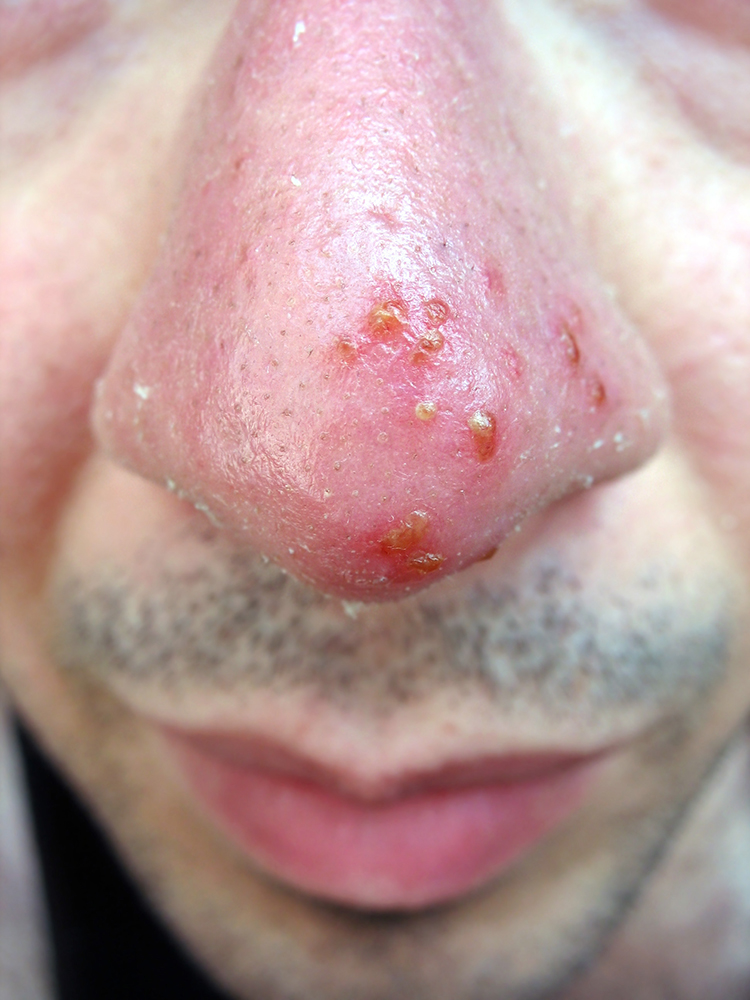Next Steps Correspondent, Dr. Bridget Kaufman, reports on Dr. Hilary Baldwin’s acne lecture presented at the 2018 Skin of Color Seminar Series (now the Skin of Color Update) and shares important clinical pearls every dermatologist should know.
During her 20-minute lecture titled, Out with the Old, In with the New: Acne Treatments that No Longer Work, Dr. Hilary Baldwin delved into acne treatment – the new, the old, and the controversial. *Clinical pearls* from this session are bolded, underlined and marked with asterisks.
Dr. Baldwin started her session by mentioning the outpouring of newspaper articles, social media posts, and scientific publications warning about the high incidence of antibiotic resistance worldwide. Dr. Ted Rosen even called for an end to antibiotic use in an article in Skin Therapy Letter. Dr. Baldwin agrees that many bacterial strains are becoming less sensitive to antibiotics, and dermatologists are contributing to the problem. Although dermatologists represent <1% of US physicians, they prescribe 5% of oral antibiotics. So, this begs the question – should we stop prescribing antibiotics for acne (or other dermatologic conditions, for that matter)?
While Dr. Baldwin urges providers to always keep antibiotic resistance in mind, she believes that antibiotics remain an important component of acne treatment regimens. Nonetheless, she told us to keep 2 things in mind when prescribing antibiotics: *1. There is huge difference between acute therapy and maintenance therapy and 2. You must have an EXIT strategy from day one.*
P. acne is a major player in the pathophysiology of acne. It does not cause infection, but rather triggers cutaneous inflammation resulting in the appearance of comedones, papules, pustules, and nodules. *The quantity of p. acnes does not correlate with disease severity – acne and non-acne skin exhibit the same concentration of p. acnes* – so it’s not that we need to eliminate p. acnes. In fact, P. acnes can’t be eradicated. *Antibiotic therapy merely suppresses p. acnes; the bacteria returns immediately upon discontinuation of the drug!* Further, p. acnes is becoming increasingly resistant to current antibiotics, with rates as high as 60% in 1996.
So, again, why are we using antibiotics to treat acne?
It turns out that tetracycline antibiotics have a multitude of anti-inflammatory properties that help suppress the inflammation seen in acne. Unfortunately, with increasing p. acnes resistance, antibiotics are becoming less effective for acne. Only 5% of drugs in the development pipeline are antibiotics, so we need to work hard to maintain the efficacy of our current agents. *Potential strategies to minimize antibiotic resistance include: limit systemic exposure to antibiotics, consider use of topical anti-inflammatory (rather than anti-microbial) dose antibiotics, utilize other topical agents early in treatment (retinoids, azelaic acid, dapsone), consider oral contraceptives, anti-androgens, and isotretinoin, and utilize light/laser therapies.* Benzoyl peroxide (BP) should be part of any acne treatment plan, as it treats acne, kills causative bacteria faster and more effectively than any other antibiotics, prevents antibiotic resistance, and reverses resistance that has already developed.
Dr. Baldwin then transitioned to discuss new medications for acne. A new formulation of doxycycline with a modified polymer coat (MPC) is now available. The MPC reduces gastrointestinal upset compared to doxycycline hyclate by slowing dissolution in the small intestine. It also delays absorption by 15-20 minutes, making 120mg MPC equivalent in strength to 100mg non-enteric coated doxycycline hyclate. *The 40mg modified-release doxycycline was found to be equivalent to 100mg QD doxycycline in clinical studies; however, in her clinical practice, Dr. Baldwin has found that she needs to use full dose doxycycline for initiation of treatment as it is more effective.* She will step down to the modified-release 40mg doxycycline upon de-escalation of treatment.
Sarecycline is a new tetracycline class antibiotic that has completed its phase 3 study. Results are not yet available for phase 3, but phase 2 demonstrated a significant reduction in inflammatory (but not non-inflammatory) lesion counts with higher doses. The narrow spectrum of sarecycline suggests that this drug may have improved efficacy, fewer side effects, and perhaps less antibiotic resistance than older tetracyclines.
Two new topical medications failed to meet their primary endpoints in phase 3 trials, which has caused “cold feet” for those involved in the development of acne treatments. Drm01(olumacostat glasaretil), a topical sebum inhibitor, showed a statistically significant reduction in lesion count at week 12 in phase 2, but the phase 3 study did not meet its primary endpoint compared to placebo. The phase 3 trial for SB204, a topical nitric oxide gel, similarly did not meet its primary endpoint. However, there was evidence of efficacy in the teenage sub-group.
Several promising medications remain in the pipeline. BPX-01, a topical minocycline gel, completed its phase 2b study showing good reduction in inflammatory lesions with BPX-01 compared to vehicle without measurable systemic absorption or significant adverse events (no photosensitivity, bleaching, or staining). FX1010-03, minocycline foam, demonstrated a reduction in inflammatory, non-inflammatory, and total lesion counts as well as good tolerability in the phase 2 study. Given that patients typically prefer foams to gels, Dr. Baldwin hypothesizes that the foam will be a more desirable vehicle if/once both products come to market. Nonetheless, she questions the value of this new drug, as it is not stable in a bottle with BP, and BP may be necessary to minimize antibiotic resistance.
A new Tretinoin/BP combination product is also in development. Despite initial challenges in combining tretinoin and BP, the tretinoin microspheres in this product supposedly remain stable in the presence of BP.
That wraps up Dr. Baldwin’s lecture on acne treatments. I hope that you enjoyed the summary!

